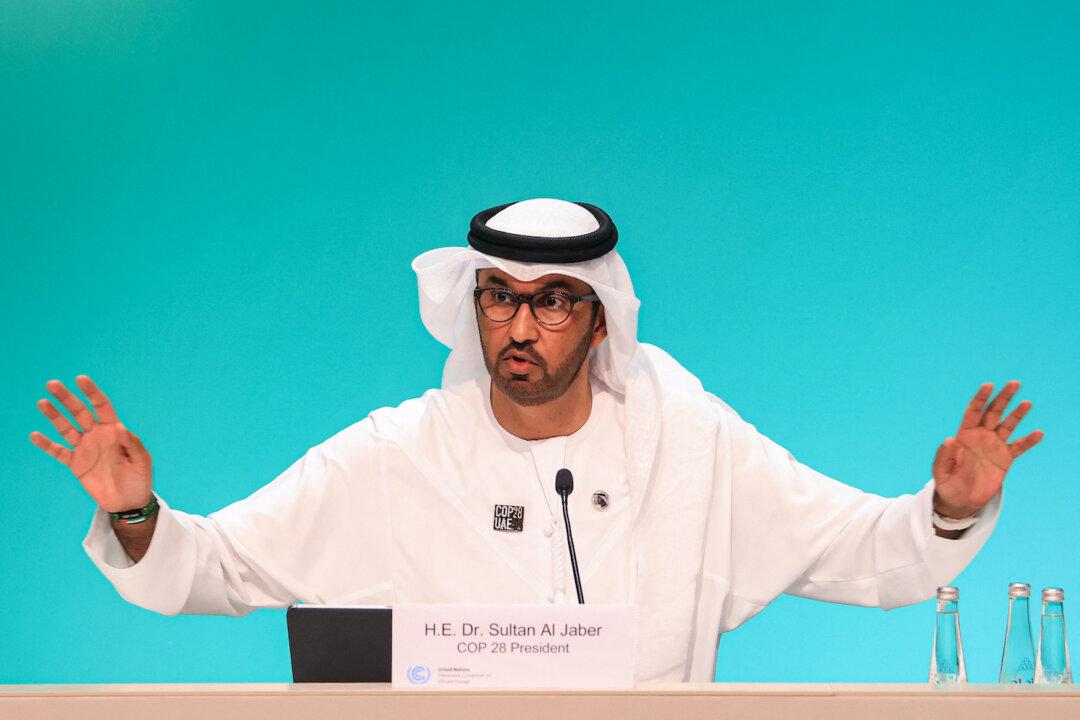This chapter derisively refers to the notorious Great Leap Forward (1958–1961) as the Great Leap Backward. But China’s Great Leap Forward is not the ultimate object of my scorn. That scorn is reserved for the contemporary project conducted by people, who, if they knew anything about history, or cared about its results, would never propose this treacherous and potentially world-devastating campaign called the Great Reset—unless their intentions are evil and not merely misguided.
Meanwhile, I’m not the first to think of this appellation in connection with Mao’s Great Leap. That distinction may be held by a Soviet critic of Mao’s quixotic strategies. In an article entitled “The Great Leap Backward,” one A. Khan’kovskiy treated the Great Leap Forward as a major deviation from the “successful” Soviet socialist system that had followed “the Great October Socialist Rev0lution.”[1]
According to the Soviet writer, Khan’kovskiy, the Soviets had undertaken their glorious revolution under unfavorable conditions. They had established a socialist state against “the united front of the imperialist powers.”[2] (Meanwhile, the Soviets were launched and kept afloat by Western—especially U.S.—financing and technology.[3] In spite of these difficulties, the Soviets had set the standard and vouchsafed to the Chinese a blueprint and model that it might follow. In the case of China, “[t]he gigantic might of the Soviet state was on its side.” The Chinese benefitted from Soviet support as the Soviets treated the Chinese like a doting parent would its child. They had sent manpower, intelligence, material supplies, and money:
“Our country gave China economic and political aid: For many years an entire army of Soviet specialists—over 10,000 people—worked in China. They helped build factories, automotive vehicle, tractor and machine building plants, electric power stations, radio stations, mines, bridges (the famous bridge across the Yangtse River), highways ...”[4]
Even American politicians had acknowledged the Soviet Union’s largesse. According to Khan’kovskiy, a joint commission of the U.S. Congress wrote in a two-volume treatise on the Chinese economy: “‘history is unaware of a similar example in which a country [the Soviet Union] would offer on a plate an entire industrial system.’”[5]
Mao’s Early Career
In addition to the Soviet Union’s aid to Communist China, Mao benefitted personally and politically from Western and Eastern European assistance. Mao had been supported in his early communist career by Yale University vis-à-vis Yale-in-China.[7] As Jonathan Spence, a professor of Chinese history put it:“In 1919, Mao, aged 26, was in Changsa, having his middle school education. He visited Peking and while there received his ... serious introduction to communist theory in Li Ta-chao’s Marxist Study Group. Now, if he was to develop a reputation in socialist circles, he had to find a forum to propagate his views .... At this crucial point the student union of Yale-in-China invited Mao to take over the editorship of their journal.”[8]
The Yale Daily News noted that Mao accepted the offer. With Mao at the helm, the paper would now be refocused to include social criticism of contemporary issues and work toward “thought reorientation.”[9]
Mao’s Leap Into Madness
Khan’kovskiy suggested that Mao’s voluntarism[11] soon got the better of him. The 8th Congress of the Chinese Communist Party was held in 1956. The Congress approved the proposals for the second Five-Year Plan for 1958–1962. “There was no question of any adventuristic ‘leaps’ or of ‘communes.’”[12] But the Maoists dismissed this original plan as Mao decided to accelerate development radically. “The Maoists simply threw it overboard, replacing a more or less efficient program with high sounding phrases of ‘great leaps’ and ‘red banners.’”[13]A second session of the 8th Congress of the Chinese Communist Party was convened in May 1958. At this convention, Mao introduced his new revolutionary scheme. “The shrieking slogan which all of Mao’s stooges soon began learning by rote was: ‘By tensing all our forces, by striving forward, let us build socialism on the principle of more, faster, better and more economically!’”[14] Mao aimed “to have China reach the production levels reached by the capitalist countries in the course of 100 to 200 years, in 10–20 or even less years.”[15]
The Great Leap Forward was an attempt to increase crop yields dramatically and to industrialize the countryside—to make local communities self-sustaining while increasing agricultural and industrial yields for the state. To accomplish these feats, the peasants were reorganized into massive communes of thousands and even tens of thousands, where all resources were communally shared, including food. Private ownership of land and free trade were abolished, along with the right to leave the collective.[16] To avail women for farming, communal dining halls were established. With women working the communal farms, many men were likewise made available for small-scale “industrial” production. Communes were instructed to produce steel in homemade, backyard furnaces. A massive campaign to collect metal tools to transform everything into steel was conducted. Khan’kovskiy mockingly described this effort:
“The Maoists intended to catch up with Britain by creating thousands and thousands of dwarf blast furnaces. It has been described already how everywhere, in cities and villages, on squares, streets and deserts, everywhere ore was to be smelted.”[17]
On the agricultural front, to justify the overseeding of land, “Mao had proclaimed his belief that ‘in company grain grows fast; seeds are happiest when growing together’—attempting to impose class solidarity on nature.”[18] Seeds were sown at five to ten times the normal density, with the predictable result that many young plants were choked off and died. The Chinese adopted farming methods from the Soviet “agrobiologist,” Trofim Lysenko, a neo-Lamarckian who rejected Mendelian genetics and instead held to the Lamarckian inheritance of acquired characteristics. The results were disastrous:
“Wheat and maize never grow well together in the same fields, and the replacement of the traditional barley crop with wheat in the high, cold fields of Tibet was simply catastrophic. Other mistakes were made in the nationwide campaign. The extermination of the sparrows that ate the grain resulted in a massive increase in the number of parasites. A large amount of hydraulic equipment that had been hurriedly and carelessly built was found to be useless or even dangerous because of the increased erosion and the risk of flooding at the first high tide. Moreover, the cost of its construction in terms of human life had been enormous: more than 10,000 out of 60,000 workers had died on one site in Henan.”[19]
The peasants exhausted themselves in everything but agriculture, having been drafted into engineering projects and small-scale steel production, the products of which were virtually worthless. As Khan’kovskiy put it, Mao had turned “millions of experienced grain growers into amateur metallurgists.”[20] The mismatch of competence and assigned duties represented a devastating loss in productive output.
“In this happy dream that was to bring real Communism within reach, the accumulation of capital and a rapid rise in the standard of living were to go hand in hand. All that had to be done was to achieve the simple objectives set by the Party.”[21]
When the crop yields fell and the death toll rose, the Maoist regime began a campaign of denial, doublespeak, torture, and mass murder. The secretary of the Xinyang district wrote: “The problem is not that food is lacking. There are sufficient quantities of grain, but 90 percent of the inhabitants are suffering from ideological difficulties.”[22] Sound familiar?
The Ultimate Great Leap Backward
Before I point to the primary similarity between China’s Great Leap Forward and the Great Reset, some notable differences should be conceded. But even these differences do not weigh in favor of the Great Reset. Whereas the Great Leap Forward was a misguided attempt to increase crop yields dramatically and industrialize the countryside, the Great Reset aims deliberately at deindustrialization and will affect a reduction in agricultural output. The Great Leap Forward established the People’s Commune and enforced collective “ownership” of land and other resources. Great Reset–initiated policies will lead to the consolidation of farmland in the hands of fewer owners, those with sufficient capital to undertake agriculture under stifling regulations and policies to meet Agenda 2030’s sustainable development goals (SDGs).Whereas during the early phase of the Great Leap Forward, eating meat was celebrated as a revolutionary act,[24] under the Great Reset, eating meat is deemed reactionary and unsustainable while eating insects and synthetic meats is promoted and celebrated as environmentally conscious.[25] The putative object of the Great Leap Forward was to increase gross domestic product to equal or surpass that of developed nations, particularly Great Britain, and to raise the standard of living of the peasants and the population at large. The Great Reset, on the other hand, represents deliberate de-growth and reduced standards of living of the lower and middle classes in the developed world and the squelching of growth in the developing world. While the Great Leap Forward was implemented to hasten the arrival of full communism, the Great Reset establishes corporate socialism, economic fascism, and neo-feudalism. (See Part I). Despite the technological innovations of the Fourth Industrial Revolution (discussed in Part IV), the Great Reset is a de-civilizational project.
Carbon neutrality by 2050 is an insanely impossible demand. Our industrial civilization and the population it supports depend on the advances made in fossil fuel extraction and use. Even Vaclav Smil, a believer in climate change, who is an otherwise credible source, agrees:
“For those who ignore the energetic and material imperatives of our world, those who prefer mantras of green solutions to understanding how we have come to this point, the prescription is easy: just decarbonize—switch from burning fossil carbon to converting inexhaustible flows of renewable energies. The real wrench in the works: we are a fossil-fueled civilization whose technical and scientific advances, quality of life, and prosperity rest on the combustion of huge quantities of fossil carbon, and we cannot simply walk away from this critical determinant of our fortunes in a few decades, never mind years.
“Complete decarbonization of the global economy by 2050 is now conceivable only at the cost of unthinkable global economic retreat, or as a result of extraordinarily rapid transformations relying on near-miraculous technical advances.”[26]






